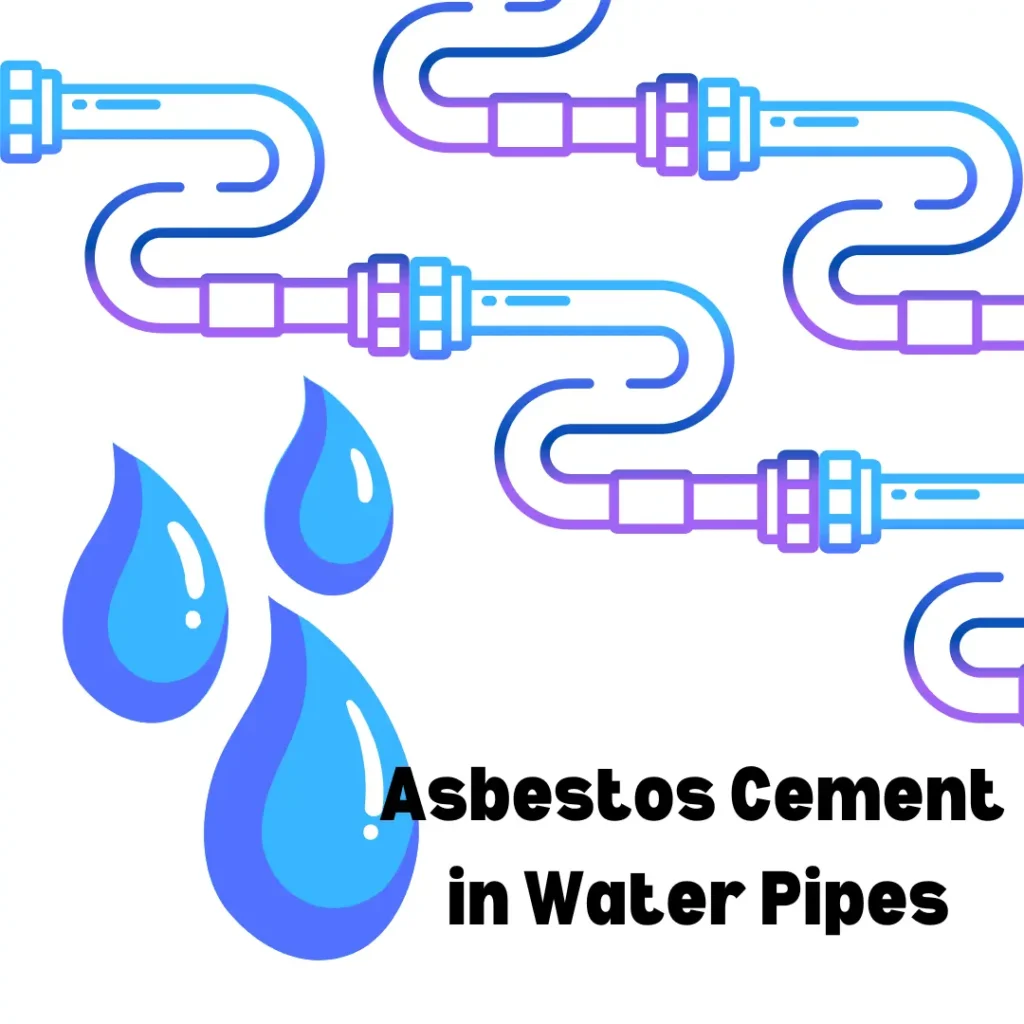Key takeaways: Asbestos cement (AC), constructed with Portland cement and asbestos, was
used for about 50 years in American infrastructure. Most notably, AC was used to outfit about
600,000 miles of water pipes in the United States and Canada. Today, these pipes remain in use,
despite their degradation and posed risk of asbestos exposure. Researchers and planning
strategists have markedly different propositions for tackling this problem, including removal,
replacement, or repairs as needed.

What is Asbestos Cement?
Asbestos cement (AC) is Portland cement (made of clay and limestone) fortified with asbestos. It
was in use for approximately 50 years in the United States, in which it was used to create pipes,
reinforce roofs, and act as siding augmentation for houses and larger buildings. Most discourse
around AC revolves around the pipes that were constructed: about 600,000 miles of the U.S. and
Canada’s pipes are still the AC pipes that were built decades ago. AC was a widely utilized
medium because of its resistance to corrosion, the ease with which water flows against its
surface, and its relatively inexpensive materials. Despite numerous studies detailing the negative
health effects of asbestos, companies still used AC for decades.
Issues with Asbestos Cement
Researchers and environmental experts have conflicting views on the extant asbestos cement pipe system. Some argue that the water is safe, considering the structural integrity of the pipes; there is little
chance for asbestos-contaminated water because the asbestos is sealed in with other compounds.
Others, like the Occupational Safety and Health Administration (OSHA) claim that any exposure
(or risk of exposure) is dangerous and should be completely avoided.
The American Water Works Association (AWWA) estimates that the lifespan of AC pipes is
around 65-105 years, assuming regular maintenance and upkeep. Other organizations estimate
that their lifespan is approximately 50 years. Regardless of lifespan disparities, an important
point still stands: these pipes will begin–and have already begun–degrading. Although not
susceptible to normal metal corrosion, the degradation of AC pipes is quantifiably more
dangerous than other pipes. When mechanically disturbed or moved, asbestos fibers will become
dislodged from the pipes–this means a serious asbestos contamination of the water that people
use to drink, bathe, and water their plants with. Local and federal governments need to decide on
a plan, either for repair or replacement, in order to protect their citizens–especially considering
the breadth of AC pipe usage.
Should Existing AC be Abated?
There are several informed opinions concerning the treatment of AC pipes. Some professionals
are proponents of abatement, or the removal and replacement of the pipes. The process of pipe
abatement would cost billions in a.) the cost of new pipe material; b.) hiring abatement
specialists and contractors; and c.) the repurposing or disposal of asbestos. Plus, abatement
specialists, despite protective gear, are exposed to critically high levels of asbestos. (Despite
banning all asbestos products in 1992, Italy’s asbestos abatement specialists were exposed to
extremely high levels of airborne asbestos, even decades after the ban.)
The answer to the abatement question should be nuanced and contextual. Risk analysis in
individual communities should be assessed before any action is made, i.e., asking questions like,
will replacing AC pipes be more beneficial to the community, or would it be objectively better to
repair as needed? Ideally, communities that are equipped with AC pipes should be regularly
testing their water for asbestos and should instate routine checks of the pipes. This way, any
issues can be addressed immediately.
If you or a loved one has been diagnosed with mesothelioma, please call 1 (800)-505-6000 or fill
out our form. We are here to help you navigate the legal process of filing a claim to receive
compensation for your mesothelioma diagnosis. We help mesothelioma victims and their
families in Pennsylvania.
Sources: